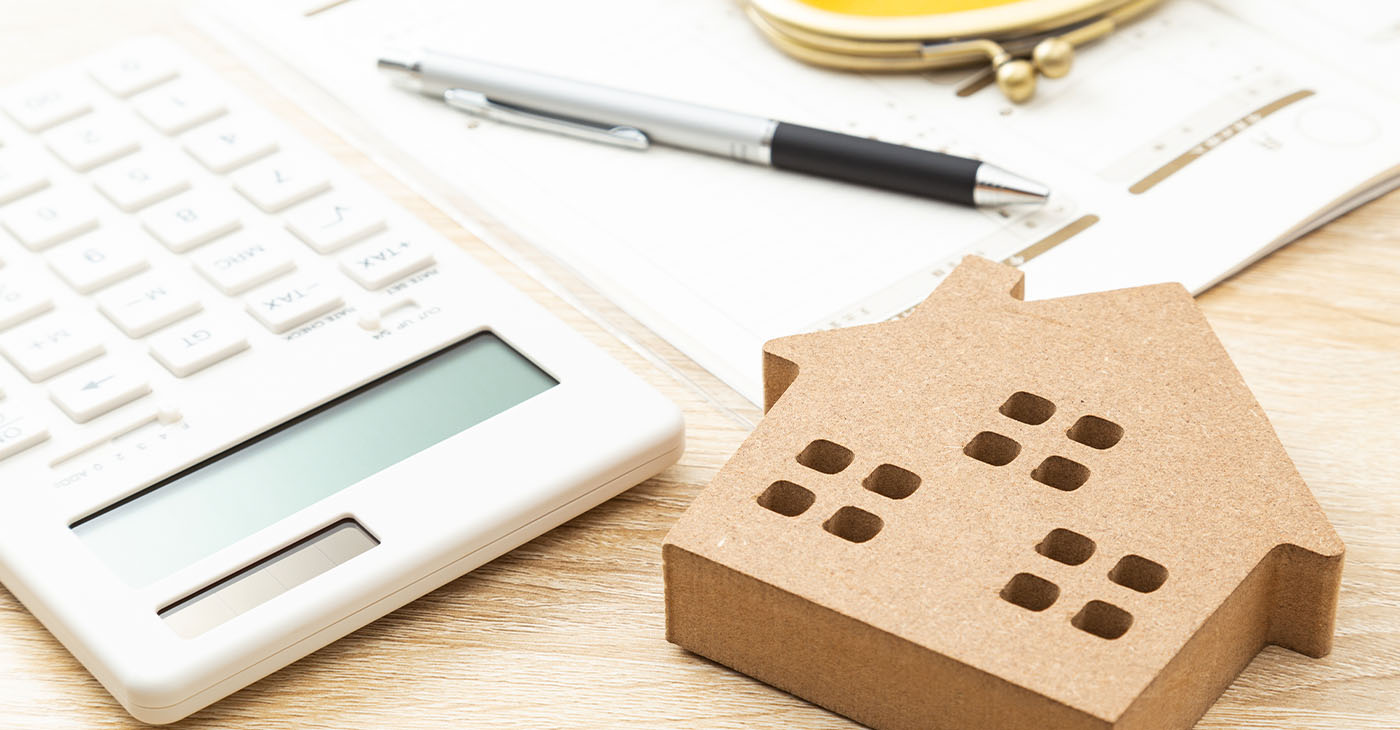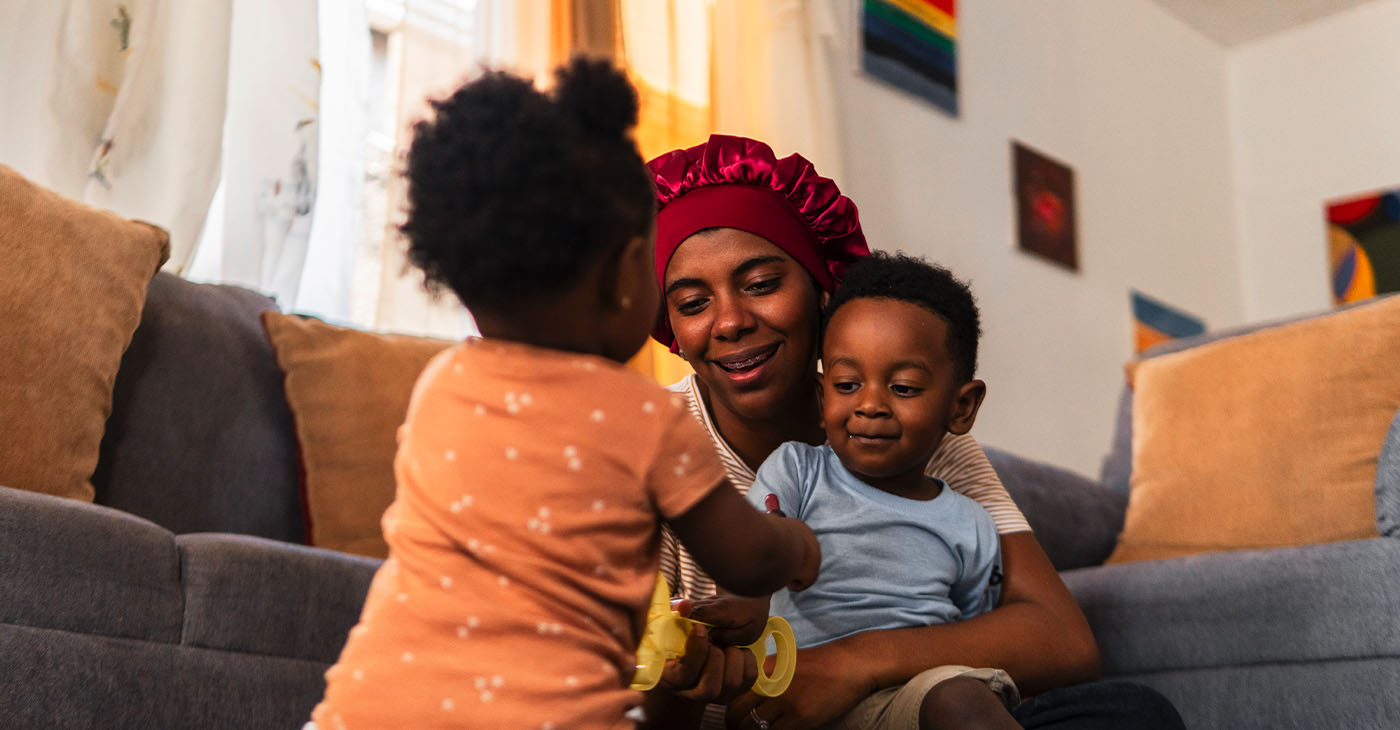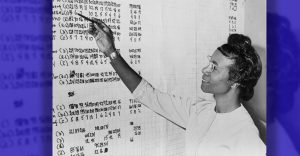#NNPA BlackPress
Opinion: How Can Working Parents Still Teach Their Kids at Home This Fall?

Last Friday, Gov. Newsom held a press briefing to announce his “Pandemic Plan for Learning and Safe Schools.” Although his plan offers clear guidance on when and how schools should reopen, it doesn’t answer some pressing questions.
The governor’s plan incorporates the California Department of Public Health (CDPH) framework that establishes a baseline of standards for K-12 schools to reopen for in-person instruction for the 2020-2021 school year and under what circumstances schools would have to shut down and return to distance learning. Guidance for colleges and universities is still being finalized.
Newsom’s plan for elementary and secondary education during the COVID-19 pandemic focuses on five key requirements: (1) safe in-person school based on local health data, (2) strong mask requirements for anyone in school, (3) physical distancing requirements and other adaptations, (4) regular testing and dedicated contact tracing for outbreaks at schools, and (5) rigorous distance learning.
California schools closed for in-person instruction in mid-March as part of a broader set of CDPH recommendations intended to reduce transmission of SARS-CoV-2, the virus that causes COVID-19. Under Newsom’s plan public and private schools in California counties on the state’s coronavirus watch list must stay closed for in-person instruction until the county has remained off the list for 14 days.
Thirty-two counties — including Los Angeles, San Diego, Alameda, and Sacramento — are currently on the state’s monitoring list because of their COVID-19 transmission levels and hospitalization rates. Eighty to 90 % of the state’s students live in these counties and if the status of their county doesn’t change will have to start the school year distance learning.
Newsom said, “Learning is non-negotiable. The virus will be with us for a year or more and school districts must provide meaningful instruction in the midst of this pandemic.”
With his announcement coming just weeks before many of the state’s 1,000 school districts were planning to resume with a hybrid of in-person instruction and distance learning, teachers and parents welcomed Newsom’s updated school opening guidelines because of their concerns about whether schools could open safely with the state experiencing a surge of COVID-19 cases.
California Teachers Association (CTA) President E. Toby Boyd said, “Today’s updated guidance from Governor Newsom through the California Department of Public Health is a good step in providing some clarity and uniformity across the state. We cannot reopen unless it is safe!”
Newsom expects schools in counties on the coronavirus watch list to offer rigorous distance learning. “The word rigorous is foundational,” he said. “If we are going to have distance learning, and we will, to make sure that it’s real, that we address equity, we address the divide and its quality to rigorous distance learning.”
The education budget allocates $5.3 billion specifically to mitigate learning loss due to the shortcomings of distance learning and it sets requirements to ensure schools provide rigorous and grade-appropriate instruction. School districts are required to provide — devices and internet connectivity; daily, live interaction with teachers and other students; class assignments that are challenging and equivalent to in-person instruction; and targeted support and interventions for English learners and special education students.
During the press briefing, Newsom said, “Students, staff, and parents, all prefer in-classroom instruction, but only if it can be done safely.”
Schools in counties not on the watch list when beginning in-person instruction must require students and staff in third grade and above to wear a mask or face covering. Second-grade students and below are strongly encouraged but not required to wear masks. If a student arrives for school without a face covering, one is supposed to be provided by the school.
CDPH requires all staff to stay 6 feet from one another and the students. Students should maintain 6 feet from one another when possible. Schools must provide increased sanitation, including the installing of hand-washing stations and periodic disinfectant efforts.
Staff in every California school is recommended to be tested for COVID-19 periodically. The state will provide resources and technical assistance for tracing COVID-19 outbreaks in school settings.
Anyone entering school must be given a health screen. Students or staff found to have a fever or other symptoms must go home immediately. If anyone in a student or staff member’s household is sick, they should stay home.
When at least 5% of the student body and staff are diagnosed with COVID-19, a school will shut down and begin offering distance learning. An entire school district should close if 25% or more of its schools have closed due to COVID-19 within 14 days, and in consultation with the local public health department. Districts may reopen after 14 days, also in consultation with the local public health department.
Superintendent of Public Instruction Tony Thurmond said, “Today’s guidance from the California Department of Public Health lays out clear metrics for our schools so that they can best understand the conditions when they must close.”
“Gov. Newsom has heeded the call for additional guidance on the issue of reopening schools, and continues to prioritize the health and safety of communities,” according to California School Board Association CEO and Executive Director Vernon M. Billy
Newsom has provided needed clarity to school districts on when and how to open and close schools and signed a budget that included distance learning standards. However, important questions remain unanswered. Two important ones are: What will be done about the ineffective and inadequate online teaching many students — especially Black and Brown students — experienced during the strict stay-at-home order last Spring, and, with kids at home, how will we address the needs of working parents?
#NNPA BlackPress
LIHEAP Funds Released After Weeks of Delay as States and the District Rush to Protect Households from the Cold
BLACKPRESSUSA NEWSWIRE — The federal government has released $3.6 billion in home heating assistance after a delay that left states preparing for the start of winter without the program’s annual funding.

By Stacy M. Brown
Black Press USA Senior National Correspondent
The federal government has released $3.6 billion in home heating assistance after a delay that left states preparing for the start of winter without the program’s annual funding. The Low-Income Home Energy Assistance Program, known as LIHEAP, helps eligible households pay heating and cooling bills. The release follows a shutdown that stretched 43 days and pushed agencies across the country to warn families of possible disruptions.
State officials in Minnesota, Kansas, New York, and Pennsylvania had already issued alerts that the delay could slow the processing of applications or force families to wait until December for help. In Pennsylvania, more than 300,000 households depend on the program each year. Minnesota officials noted that older adults, young children, and people with disabilities face the highest risk as temperatures fall.
The delay also raised concerns among advocates who track household debt tied to rising utility costs. National Energy Assistance Directors Association Executive Director Mark Wolfe said the funds were “essential and long overdue” and added that high arrearages and increased energy prices have strained families seeking help.
Some states faced additional pressure when other services were affected by the shutdown. According to data reviewed by national energy advocates, roughly 68 percent of LIHEAP households also receive nutrition assistance, and the freeze in multiple programs increased the financial burden on low-income residents. Wolfe said families were placed in “an even more precarious situation than usual” as the shutdown stretched into November.
In Maryland, lawmakers urged the Trump administration to release funds after the state recorded its first cold-related death of the season. The Maryland Department of Health reported that a man in his 30s was found outdoors in Frederick County when temperatures dropped. Last winter, the state documented 75 cold-related deaths, the highest number in five years. Rep Kweisi Mfume joined more than 100 House members calling for immediate federal action and said LIHEAP “is not a luxury” for the 100,000 Maryland households that rely on it. He added that seniors and veterans would be placed at risk if the program remained stalled.
Maryland Gov. Wes Moore used $10.1 million in state funds to keep benefits moving, but noted that states cannot routinely replace federal dollars. His administration said families that rely on medical equipment requiring electricity are particularly vulnerable.
The District of Columbia has already mapped out its FY26 LIHEAP structure in documents filed with the federal government. The District’s plan shows that heating assistance, cooling assistance, weatherization, and year-round crisis assistance operate from October 1 through September 30. The District allocates 50 percent of its LIHEAP funds to heating assistance, 10 percent to cooling, 13 percent to year-round crisis assistance, 15 percent to weatherization, and 10 percent to administrative costs. Two percent is used for services that help residents reduce energy needs, including education on reading utility bills and identifying energy waste.
The District’s plan lists a minimum LIHEAP benefit of $200 and a maximum of $1,800 for both heating and cooling assistance. Crisis benefits are provided separately and may reach up to $500 when needed to resolve an emergency. The plan states that a household is considered in crisis if it has been disconnected from energy service, if heating oil is at 5 percent or less of capacity, or if the household has at least $200 owed after the regular benefit is applied.
The District’s filing notes that LIHEAP staff conduct outreach through community meetings, senior housing sites, Advisory Neighborhood Commissions, social media, posters, and mass mailings. The plan confirms that LIHEAP applicants can apply in person, by mail, by email, or through a mobile-friendly online application and that physically disabled residents may request in-home visits.
As agencies nationwide begin distributing the newly released funds, states continue working through large volumes of applications. Wolfe said LIHEAP administrators “have been notified that the award letters have gone out and the states can begin to draw down the funds.”
#NNPA BlackPress
Seven Steps to Help Your Child Build Meaningful Connections
BLACKPRESSUSA NEWSWIRE — Swinging side by side with a friend on the playground. Sharing chalk over bright, colorful sidewalk drawings. Hiding behind a tree during a spirited game of hide-and-seek. These simple moments between children may seem small, but they matter more than we think

By Niyoka McCoy, Ed.D., Chief Learning Officer, Stride/K12
Swinging side by side with a friend on the playground. Sharing chalk over bright, colorful sidewalk drawings. Hiding behind a tree during a spirited game of hide-and-seek. These simple moments between children may seem small, but they matter more than we think: They lay the foundation for some of life’s most important skills.
Through everyday play, young children begin learning essential social and emotional skills like sharing, resolving conflicts, showing empathy, and managing their emotions. These social skills help shape emotional growth and set kids up for long-term success. Socialization in early childhood isn’t just a “nice-to-have”—it’s essential for development.
Yet today, many young children who haven’t yet started school aren’t getting enough consistent, meaningful interaction with peers. Research shows that there’s a decline in active free play and peer socialization when compared to previous generations.
There are many reasons for this. Children who are home with a parent during the day may spend most of their time with adults, limiting opportunities for peer play. Those in daycare or preschool may have restricted free play, and large classrooms can reduce supervision and social coaching. Some children live in rural areas, are homebound due to illness, have full schedules, or rely on screens to fill their playtime. And for some families, finding other families with young children to connect with isn’t easy.
While these challenges can feel significant, opportunities for connection still exist in every community. Families can take simple steps to help children build friendships, create a sense of belonging, and strengthen social skills. Here are some ideas to get started:
- Storytime sessions at libraries or local bookstores
- Community offerings such as parent-child workshops, art, music, gymnastics, swimming, or sports programs
- Weekly events at children’s museums, which may include art projects, music workshops, or science experiments
- Outdoor exploration, where kids can play with peers
- Local parenting groups that organize playdates and group activities
- Volunteer opportunities where children can participate, such as pet adoption events or packing meals at a food bank
- Classes for kids at local businesses, including hardware, grocery, or craft stores
Some of these community activities are free or low-cost and give kids the chance to build friendships and practice social skills. Parents can also model positive social behavior by interacting with other parents and encouraging their children to play with their peers.
These may seem like small moments of connection, but they can have a powerful impact. Every time your child shares a toy, plays make-believe with peers, or races a friend down the slide, they’re not just playing—they’re learning the skills that build confidence, empathy, and lasting friendships. And it’s good for you, too. Creating intentional opportunities for play also helps you strengthen your own network of parents who can support one another as your children grow together.
#NNPA BlackPress
Seven Steps to Help Your Child Build Meaningful Connections
BLACKPRESSUSA NEWSWIRE — Swinging side by side with a friend on the playground. Sharing chalk over bright, colorful sidewalk drawings. Hiding behind a tree during a spirited game of hide-and-seek. These simple moments between children may seem small, but they matter more than we think

By Niyoka McCoy, Ed.D., Chief Learning Officer, Stride/K12
Swinging side by side with a friend on the playground. Sharing chalk over bright, colorful sidewalk drawings. Hiding behind a tree during a spirited game of hide-and-seek. These simple moments between children may seem small, but they matter more than we think: They lay the foundation for some of life’s most important skills.
Through everyday play, young children begin learning essential social and emotional skills like sharing, resolving conflicts, showing empathy, and managing their emotions. These social skills help shape emotional growth and set kids up for long-term success. Socialization in early childhood isn’t just a “nice-to-have”—it’s essential for development.
Yet today, many young children who haven’t yet started school aren’t getting enough consistent, meaningful interaction with peers. Research shows that there’s a decline in active free play and peer socialization when compared to previous generations.
There are many reasons for this. Children who are home with a parent during the day may spend most of their time with adults, limiting opportunities for peer play. Those in daycare or preschool may have restricted free play, and large classrooms can reduce supervision and social coaching. Some children live in rural areas, are homebound due to illness, have full schedules, or rely on screens to fill their playtime. And for some families, finding other families with young children to connect with isn’t easy.
While these challenges can feel significant, opportunities for connection still exist in every community. Families can take simple steps to help children build friendships, create a sense of belonging, and strengthen social skills. Here are some ideas to get started:
- Storytime sessions at libraries or local bookstores
- Community offerings such as parent-child workshops, art, music, gymnastics, swimming, or sports programs
- Weekly events at children’s museums, which may include art projects, music workshops, or science experiments
- Outdoor exploration, where kids can play with peers
- Local parenting groups that organize playdates and group activities
- Volunteer opportunities where children can participate, such as pet adoption events or packing meals at a food bank
- Classes for kids at local businesses, including hardware, grocery, or craft stores
Some of these community activities are free or low-cost and give kids the chance to build friendships and practice social skills. Parents can also model positive social behavior by interacting with other parents and encouraging their children to play with their peers.
These may seem like small moments of connection, but they can have a powerful impact. Every time your child shares a toy, plays make-believe with peers, or races a friend down the slide, they’re not just playing—they’re learning the skills that build confidence, empathy, and lasting friendships. And it’s good for you, too. Creating intentional opportunities for play also helps you strengthen your own network of parents who can support one another as your children grow together.
-

 Activism4 weeks ago
Activism4 weeks agoOakland Post: Week of November 12 – 18, 2025
-

 Activism3 weeks ago
Activism3 weeks agoIN MEMORIAM: William ‘Bill’ Patterson, 94
-

 Activism4 weeks ago
Activism4 weeks agoHow Charles R. Drew University Navigated More Than $20 Million in Fed Cuts – Still Prioritizing Students and Community Health
-

 Bay Area4 weeks ago
Bay Area4 weeks agoNo Justice in the Justice System
-

 #NNPA BlackPress3 weeks ago
#NNPA BlackPress3 weeks agoLewis Hamilton set to start LAST in Saturday Night’s Las Vegas Grand Prix
-

 #NNPA BlackPress3 weeks ago
#NNPA BlackPress3 weeks agoBeyoncé and Jay-Z make rare public appearance with Lewis Hamilton at Las Vegas Grand Prix
-

 Activism3 weeks ago
Activism3 weeks agoOakland Post: Week of November 19 – 25, 2025
-

 #NNPA BlackPress4 weeks ago
#NNPA BlackPress4 weeks agoThe Perfumed Hand of Hypocrisy: Trump Hosted Former Terror Suspect While America Condemns a Muslim Mayor





















































